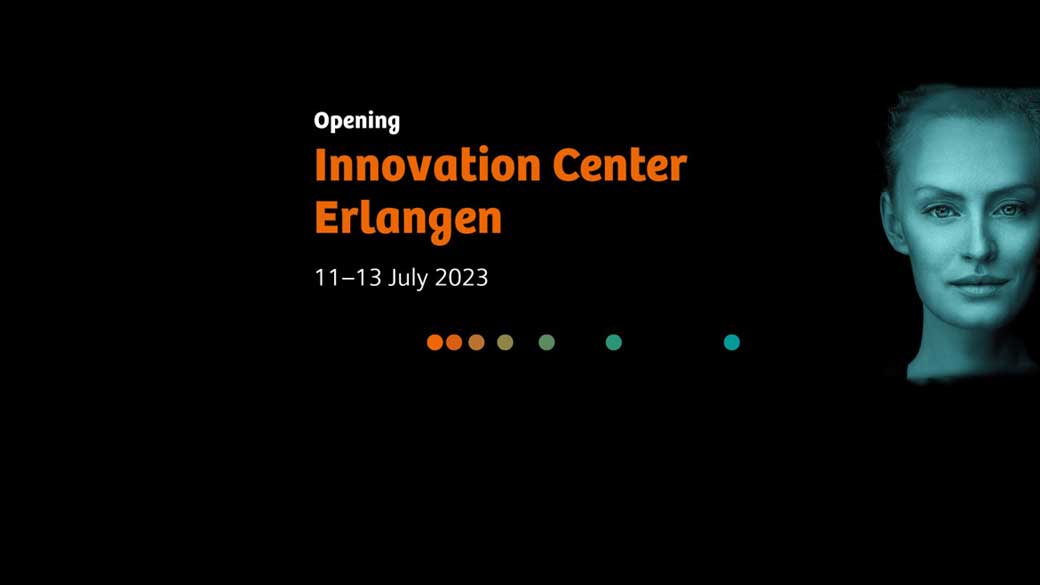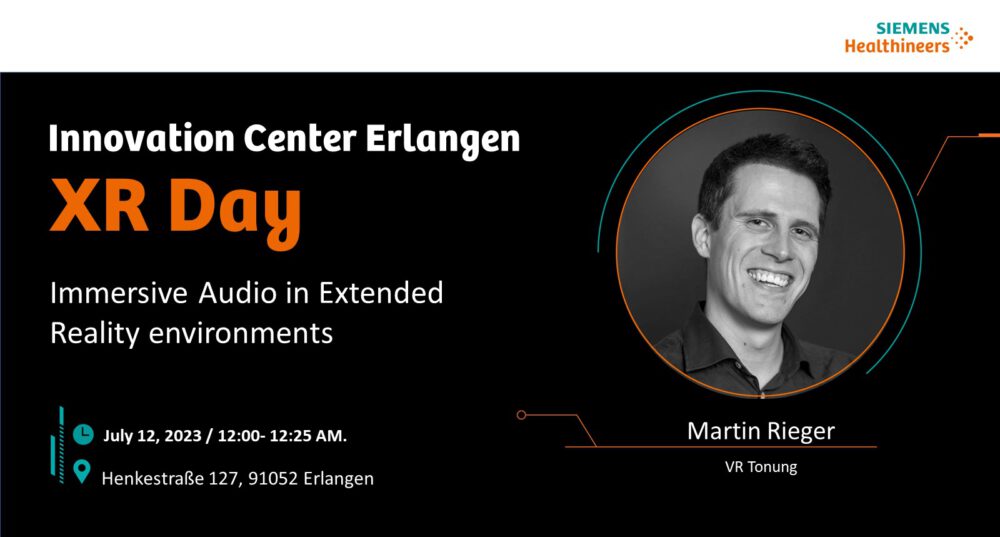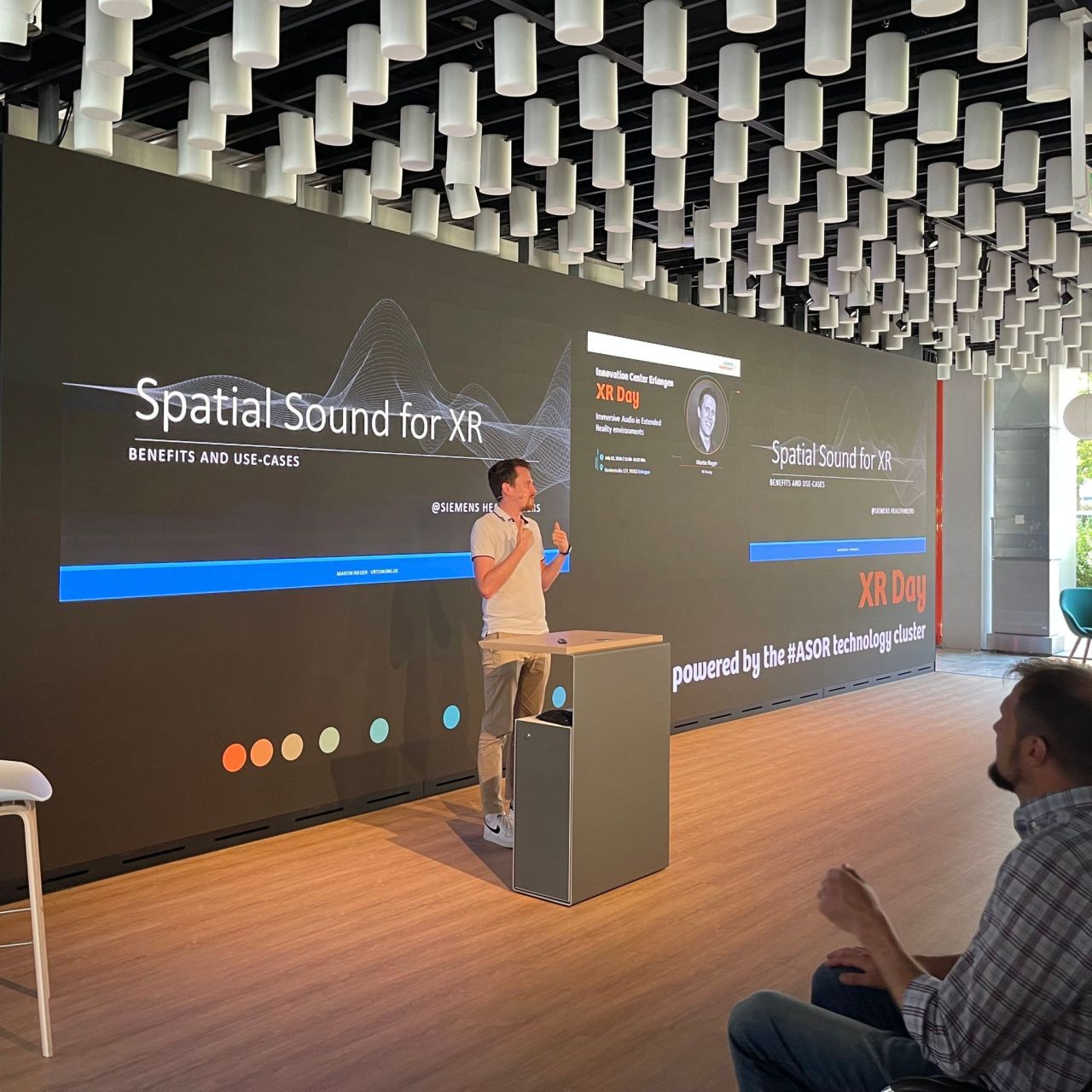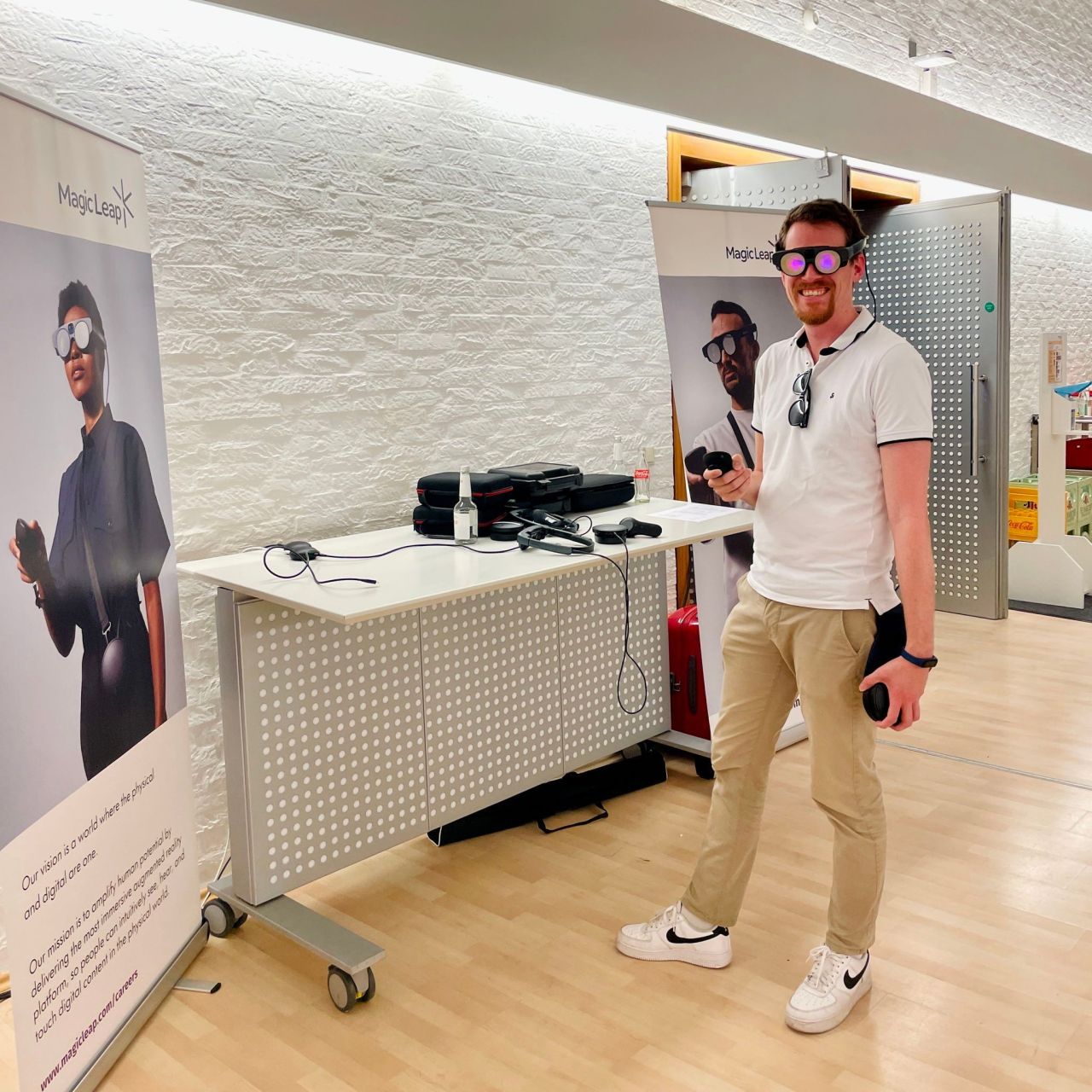
Siemens Healthineers VR Training for Spatial Sound
About the XR-Day
Are you an XR enthusiast, tech guru, or business innovator? Join us for a thrilling XR Day at Siemens Healthineers! We can’t wait to showcase our latest technology experiences, product demos, and business cases during our key note sessions and expo at the state-of-the-art Innovation Center in Erlangen.
But that’s not all – we’re thrilled to announce that we’ll have fantastic partners from the XR sector joining us, including heavy-hitters like #meta #varjo #teamviewer #ptc #siemens #magicleap and more!
What’s even better? This exciting event is hybrid, meaning that it’s accessible to everyone no matter where you are! With an online link to follow, plus a physical location at Siemens Healthineers Innovation Center in Henkestraße 127, 91052 Erlangen, you can join us in person or virtually.
Registration is required, so stay tuned for more details and make sure to spread the word! Incredible innovations are happening right now – don’t miss out on the action. #asor #healthineers #virtualreality #augmentedreality #metaverse #siemens #innovation #digitalisation #xr
What is VRTonung doing there?

Immersive Audio in Extended Reality Environments
Are you ready to take your XR experiences to the next level? Don’t forget about the power of sound! Martin Rieger, aka VRTonung, knows firsthand how important spatial audio is in creating truly immersive experiences. He’s passionate about showing you how to tap into the full potential of sound in XR.
Join Martin for an exciting presentation where you’ll learn how spatial audio can make all the difference in your XR projects. From creating a more believable sense of space and movement to guiding users through navigation and interactions, we’ll explore the countless ways that sound can elevate your work.
Let’s unlock the full potential of immersive audio together!
XR-Day Highlights

During Martin’s presentation at Siemens Healthineers, he poured his heart out as he shared first-hand accounts of his encounters with the immersive world of immersive audio. Together with his audience, he delved into the depths of creating believable virtual spaces, seamlessly guiding users through virtual worlds and adding that certain something to your XR projects.
Other Highlights:
🤭 Imagine: The MagicLeap team eagerly exploring Meta’s headset, while Meta couldn’t resist taking a look at what MagicLeap has to offer
🚀 The rapid advances in augmented and virtual reality: now it looks like all of them offer some kind of pass-through mode, enabling VR and AR experiences in one device
🗣️ A lively discourse between theory and practice is important, for example on the scientific definition of “immersive”. Both technology and content should be considered to create impactful experiences

We are still in the midst of a learning process where we are constantly pushing boundaries and sharing our knowledge. Let’s embrace this collective growth and continue to learn from each other. Together we can shape the future of XR, unlock its full potential and pave the way for immersive experiences beyond our wildest dreams.
Follow Martin on this incredible journey of discovery, innovation and #spatialaudio! #XRCommunity #ImmersiveTech #LearningTogether #XR #AR #VR #immersiveaudio #ImmersiveTraining #UserExperience #Content #Research #ImmersiveExperience
Post-Event Report: Spatial Sound for XR at Siemens Healthineers Innovation Center
At the Siemens Healthineers Innovation Center, the recent presentation on Spatial Sound for XR shed light on the growing role of immersive audio in virtual reality (VR), augmented reality (AR), and extended reality (XR) technologies.
Led by Martin Rieger, an expert in 3D sound and immersive audio, the session highlighted how spatial audio enhances virtual environments, improves training effectiveness, and provides a more lifelike simulation experience for healthcare providers and trainees.
Why Sound Matters in Virtual and Mixed Reality
One of the key takeaways from the presentation was the importance of spatial sound in virtual environments. Unlike vision, which is limited to a 180-degree field of view, human hearing perceives sound in 360 degrees.
This means that audio cues can guide users intuitively, making VR training and simulations more effective.
Additionally, sound plays a crucial role in communication and immersion, solving problems like Zoom fatigue by creating more natural and engaging virtual interactions.
Head-tracking technology further enhances spatial audio by adjusting sound sources based on subtle head movements, creating a more realistic and externalized audio experience—a feature now integrated into AirPods, Bose, and Yamaha headphones.
Practical Use Cases in Healthcare Training
One of the primary applications discussed was the use of XR technology for training healthcare professionals, including surgeons, nurses, and medical students.
Traditional training methods often rely on textbooks, videos, and in-person demonstrations, but virtual reality training (VR training) allows for hands-on practice in lifelike scenarios without real-world consequences.
By incorporating spatial audio, these simulations become even more effective. Trainees can hear a patient’s breathing, monitor beeping medical devices, or receive real-time auditory guidance, mimicking real hospital environments.
This enhances situational awareness and decision-making in critical healthcare scenarios.
Challenges and Considerations in Spatial Sound Implementation
While spatial audio adds immense value to XR experiences, implementing it correctly is crucial. As Rieger pointed out, simply placing an audio object in a game engine does not make it immersive.
Instead, factors like sound source positioning, reverberation, attenuation curves, and occlusion effects need to be carefully calibrated.
Another challenge is budget allocation. Many XR projects prioritize visuals, yet spatial audio can provide up to 50% added value if properly integrated—making a compelling case for investing 10-20% of an XR project’s budget in sound design.
Future Outlook: The Growing Influence of Audio in XR
The discussion also highlighted future trends in XR audio technology. The demand for headphones with head-tracking capabilities is expected to surpass head-mounted displays (HMDs), as hearables (wearable earbuds) are becoming more advanced.
These devices are not only used for entertainment but also for authentication, biometric monitoring, and accessibility solutions—potentially transforming the hearing aid industry.
With major tech companies like Apple, Bose, and Ray-Ban investing in head-tracking audio, the next generation of XR experiences will rely on more personalized and interactive soundscapes.
Conclusion: A New Era for Spatial Audio in Training and Simulation
The presentation at Siemens Healthineers Innovation Center reinforced the game-changing potential of spatial audio in XR training and healthcare applications.
From VR training for medical professionals to interactive simulations that mimic real-world environments, 3D sound enhances immersion, learning, and communication.
As XR technology continues to evolve, spatial sound will play an increasingly crucial role—bridging the gap between the physical world and virtual environments while making training experiences more cost-effective, lifelike, and impactful. 🚀